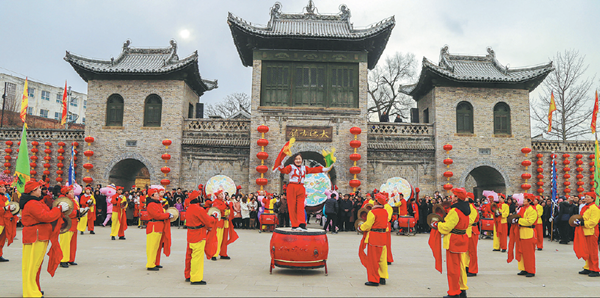Adopt a heritage building and help save a culture

A performance is staged for tourists in Daiyang old town, Zezhou county, Shanxi province, earlier this year. Shanxi has more than 53,000 immovable cultural relics, the most of all provincial-level regions in the country. [Photo by Zhang Jianjun for China Daily]
Businesspeople are increasingly footing the bill to restore, maintain dilapidated historic structures
"It looked totally different 10 years ago," said Huang Wensheng, recalling the dilapidated condition of the Longwang Temple in Quwo county, Shanxi province.
Back then, Huang was chair of the Quwo Association of Industry and Commerce and had been convinced by the local cultural heritage bureau to become one of the first "adopters" in the county of a rundown building.
"Weeds grew wildly out of the eaves, willow branches tangled together and all items able to be lifted by men had been carried away," he said. "Even stone pillars were stolen."
Shanxi has 53,976 immovable cultural relics, ranging from national to county level, the most of all provincial-level regions in the country. Quwo has a history dating back more than 3,000 years, and boasts more cultural heritage buildings than the county government can look after.
The idea of having private input into the preservation and restoration of heritage buildings took seed in 2002.
Sun Yonghe, head of the Quwo Cultural Heritage Administrative Bureau, gave a green light to private donations for the renovation of a memorial archway built in the Ming Dynasty (1368-1644).
The initiative was welcomed by residents, especially wealthy businesspeople, who wanted to keep their county's historical memories intact.
The county government said it was only capable of taking care of 110 of the 526 historical buildings in its jurisdiction.



